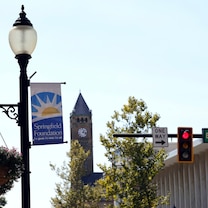Before Newtown, How 4 Other Schools Handled Reopening After Tragedy
A Newtown panel approved a plan to tear down, rebuild Sandy Hook Elementary.
May 11, 2013— -- intro: A panel of 28 Newtown officials voted unamimously for a plan to tear down Sandy Hook Elementary school, the site of one of the worst school massacres in U.S. history, and rebuild a new school in its place.
Twenty first-graders and six educators were killed when a gunman opened fire at the school in December 2012. Three weeks later, students went back to school at the building that used to be the Chalk Hill Middle School in Monroe, about six miles away.
Each classroom was painstakingly recreated to match how it had been left at Sandy Hook, down to the placement of a Crayon on a desk.
The initial vote was a significant step for Newtown, however it will have to clear the local school board and pass a referendum.
If approved, officials said construction of a new school could begin as soon as spring of next year, with the new building opening in January 2016.
With emotions running high and taxpayer money involved, it's not the first time communities have grappled with determining the best way to return to some semblance of normalcy following a tragedy. Click through to see how other school shootings were handled.
quicklist: 1title: Columbine High School text: On April 20, 1999, seniors Eric Harris, 18, and Dylan Klebold, 17, went on a deadly shooting rampage that killed 12 of their classmates and a teacher, and wounded 23 others, before committing suicide.
It took four months for the Littleton, Colo., school to reopen its doors after what was then the most fatal school shooting in recent history.
The library, where 13 students were murdered, was torn down and turned into a memorial. On Aug. 17, 1999, students cheered "We are Columbine" over and over at a "Take Back the School" rally as they returned to campus to begin a new school year.
media: 19159358
quicklist: 2title: West Nickel Mines Schooltext: The white, one-room school house surrounded by the fields of Pennsylvania Amish country became the scene of a tragedy on Oct. 2, 2006.
Charles Carl Roberts IV, 32, lined up 10 girls against a chalkboard and shot them, killing five. As police closed in, Roberts took his own life.
Six months after the tragedy that shook the tightknit and private community, a new schoolhouse opened a couple hundred yards from the scene of the massacre.
While the new school was a sign of resilience, there were also lingering reminders of the past. The schoolhouse came equipped with a locking steel door and an emergency release bar.
media: 19159448
quicklist: 3title: Virginia Techtext: On April 16, 2007, Seung-Hui Cho, a senior at Virginia Tech, went on a shooting spree that terrorized the campus. The school's three-story engineering building, where 30 people were slain, was turned into a scene of carnage.
School officials heard suggestions that ranged from fully reopening all classrooms, to turning it into a memorial, to demolishing it entirely. The building went through extensive renovations and reopened as the Department of Engineering Science and Mechanics and the Center for Peace Studies and Violence Prevention offices and laboratories.
media: 19159389
quicklist: 4title: Chardon High Schooltext: On Feb. 27, 2012, three students were killed when T.J. Lane opened fire on his classmates in the cafeteria at Chardon High School in Ohio. Three other students were injured.
After the shooting, the school developed a "healing and transition" plan to make students feel comfortable returning to classes. The cafeteria, where the shooting occurred, was repainted and the tables were rearranged.
On March 1, 2012, students and parents attended a "walk through" of the school, where grief counselors were on hand before classes resumed the next day.
Lane, who showed up to his sentencing in March this year wearing a T-shirt printed with the word "Killer," was given life in prison without paraole.
media: 19159413




